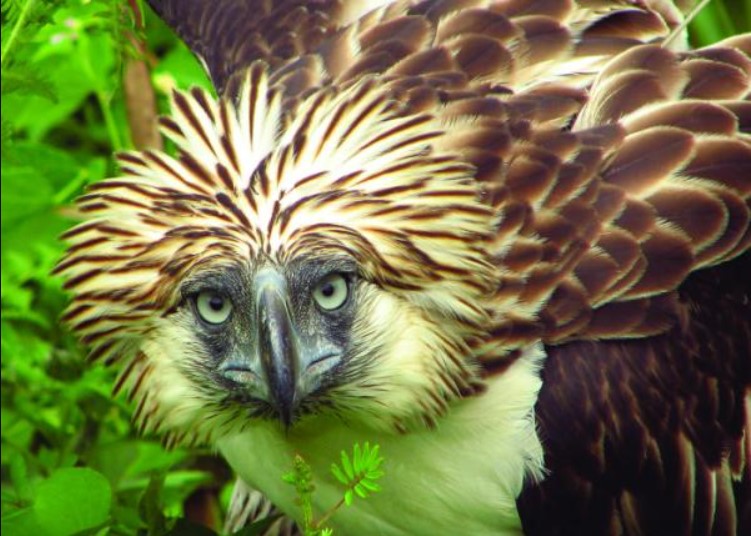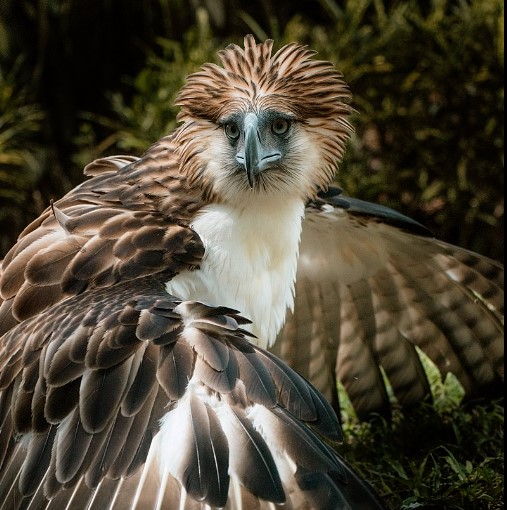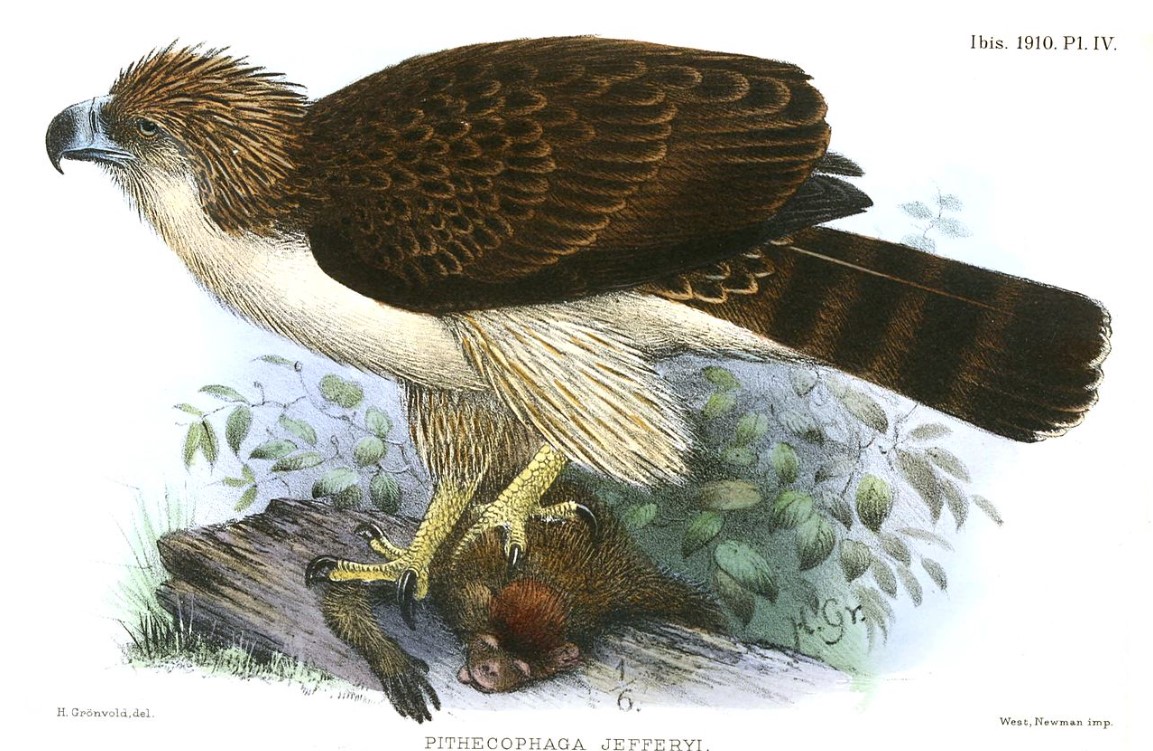





The Philippine eagle(Pithecophaga jefferyi) is one of the rarest birds in the world. It is also called the monkey-eating eagle and the great Philippine eagle. It is the largest of all eagles in terms of wing surface area and length. They were listed as Critically Endangered with fewer than 500 individuals in the wild and are endemic to the Philippines’ forests. In 1995, they were listed as the national bird of the Philippines. The most significant threat to this bird is habitat loss, resulting from high amounts of deforestation throughout its range.
Philippine eagles have dark faces and long, brown feathers on their heads that form a mane. This bird has a dark brown back and white under its wings and underside. It has large, powerful, dark claws and its beak is bluish-gray. The juveniles are similar to the adults except their upperpart feathers have pale fringes. They mostly measure 86-102 cm in length; however, a survey of several specimens from the largest natural history collections suggests that the average length was 95 cm for males and 105 cm for females. The male is believed to be about 10% smaller than the female. It has a wingspan of 184-220 cm and its weight ranges from 4.7-8 kg. It is considered the largest of the eagles in terms of length and wing surface area. The Steller’s sea eagle and the Harpy eagle are larger in terms of weight and bulk.
Philippine eagles are monogamous and once paired, a couple remains together for the rest of their lives. If one dies, the remaining eagle often searches for a new mate to replace the one lost. The beginning of courtship is signaled by nest-building, and the eagle remaining near its nest. Aerial displays also play a major role in the courtship. The nest is normally built on any tall tree with an open crown, in primary or disturbed forest. The nests are lined with green leaves and can be around 1.5 m (4.9 ft) across. The female typically lays one egg, although occasionally two have been reported. The egg is incubated for 58 to 68 days (typically 62 days) by both parents, but the female does the majority of incubating during the day and all of it at night. Both parents help feed the newly hatched eaglet. The chick fledges after 4 or 5 months and both parents take care of it for a total of 20 months. Females usually become reproductively mature at five years of age and males at seven. It rivals the harpy and crowned eagle for having the longest breeding cycle of any bird of prey.
It has a wide range of prey like reptiles, birds, and mammals, which include civets and colugos. The Philippine eagle was initially called the monkey-eating eagle because it was believed to almost exclusively feed on monkeys. Their diet also includes flying foxes, giant cloud rats, flying squirrels, tree squirrels, fruit bats, and even other birds of prey. They will also feed on flying lemurs in some locations and have been reported to capture even young pigs and small dogs. They primarily use two hunting techniques. One is still-hunting, in which it watches for prey activity while sitting almost motionlessly on a branch near the canopy. The other is perch-hunting, which entails periodically gliding from one perch to another. While perch-hunting, they often work their way gradually down from the canopy down the branches, and if not successful in finding prey in their initial foray, they fly or circle back up to the top of the trees to work them again.
The IUCN listed this bird as Critically Endangered in 1994. It is believed that 180-500 individuals live in the wild. They are threatened primarily by deforestation through logging and expanding agriculture. Old-growth forests are being lost at a high rate. Mining, pollution, exposure to pesticides that affect breeding, and poaching are also major threats. Additionally, Philippine eagles are occasionally caught in traps laid by local people for deer. In 1969, the Monkey-eating Eagle Conservation Program was started to help preserve this species. In 1992, the first Philippine eagles were hatched in captivity through artificial insemination. The first captive-bred bird to be released in the wild, Kabayan, was released in 2004 in Mindanao; however, he was accidentally electrocuted in January 2005. Another eagle, Kagsabua, was released in March 2008 but was shot and eaten by a farmer. In June 2015, an eagle was released after being treated for a gunshot wound; two months later it was shot and killed. Killing this bird is punishable under law by 12 years in jail and heavy fines. The Philippine eagle may soon no longer be found in the wild unless direct intervention is taken. The Philippine Eagle Foundation in Davao City is one organization dedicated to the protection and conservation of the Philippine eagle and its forest habitat. The Philippine Eagle Foundation has successfully bred Philippine eagles in captivity for over a decade and conducted the first experimental release of a captive-bred eagle to the wild.
The only tip I would recommend for helping this animal is to visit zoos accredited by the Association of Zoos and Aquariums(AZA). These zoos participate in breeding programs and the money that you spend will also fund wildlife conservation. In addition to that, you can also donate to the Philippine Eagle foundation at www.philippineeaglefoundation.org. In the website you can also symbolically adopt a phillipine eagle.